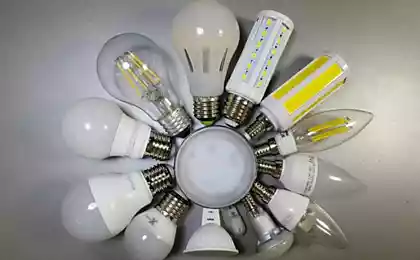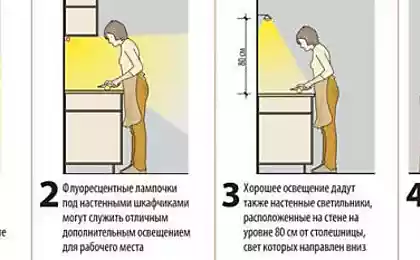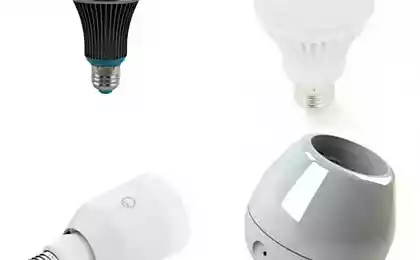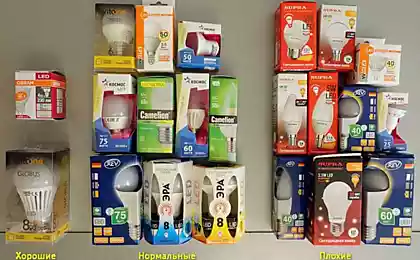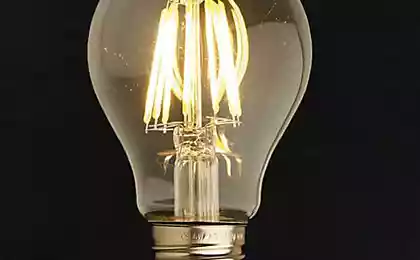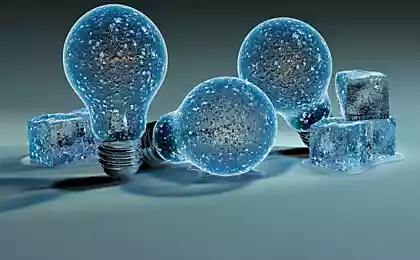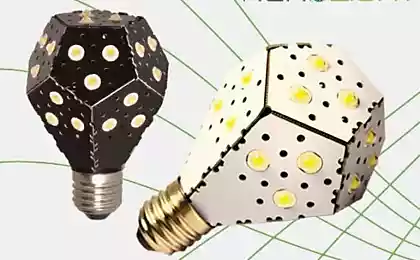660
Manufacturers of LED lights solve the problem of a too long life
23 Dec 1924, representatives of the largest companies in the production of lighting was found in Geneva (Switzerland) and agreed to the establishment of Phoebus — probably the first in the history of the industrial cartel the global scale. The company discussed the problem of product quality. The problem was that the quality of incandescent lamps is too much increased, and the duration of their service threatened the business. In other words, the lamps served for so long that began to decline in sales.
In the contract the standard life span of incandescent bulbs was reduced to 1000 hours. This agreement is considered to be one of the first examples of planned obsolescence in industrial scale and a service life of about 1000 hours remained until now.
It is noteworthy that with the beginning of sales of new models of lamps manufacturers explained: the run time decrease is due to the fact that it is necessary to set the quality standards for light levels and energy efficiency. But historians who study archival documents Phoebus, say that the new models had only one significant technical innovation: a shorter lifetime of the filament. Light bulb just before it burns out.
Today, the manufacturers of led light bulb gets the same problem. Conventional lamps LED life time is 25 000 hours, according to the standard, then they lose more than 30% of its brightness. Under the condition of continuous operation is 1041 day, that is a little less than three years. In a typical American household bulb lighting is not staffed, and an average of 1.6 hours a day. Thus, resource led bulb will last for about 43 years, but in the market there are LED bulbs with a lifespan of 50,000 hours. What sustainable business can count on selling such products?
In our days, planned obsolescence of products has become a normal technique not only for bulbs but also for consumer electronics, smartphones, computers, cars and other goods. Moreover, planned obsolescence and the cult of consumption is considered to be a stimulus to the economy and supported on a national scale. During the great depression in the United States some economists called planned obsolescence of products "new God" for the business. Since the thesis of the need to support the "re-consumption" through planned obsolescence has become the almost immutable economic axiom. It formed the basis of the entire consumer economy of today, without which it is difficult to imagine a modern society. Now people are working 10 hours a day without leave, to have the opportunity to buy new products to replace old ones that are planned obsolete.
To the cartel of 1924, the bulb worked longer than many modern products. Light bulb at fire station No. 6 in Livermore is an outstanding example of the reliability of products at the time. With a rated power of 60 watts, this hand-blown bulb is now operating at about 4 watts, but still around the clock provides night lighting for fire trucks at the station. Although now it performs rather a decorative function, but before the lamp was hanging lower, and the sound of the fire alarm before leaving every fireman thought it his duty to slap her for good luck.

The lamp was manufactured around 1900 by engineers of a small American company Shelby Electric of Ohio, on the design of Franco-American inventor with Russian roots Sheila Adolf (Adolphe Chaillet). The exact construction of the bulb-record not thoroughly understood. It was one of many experimental lights. At that time, the company Shelby Electric has tested many different design types. We only know that it uses a carbon filament with a thickness of about as current filaments, usually made of tungsten.
In the near future, "the old lady" from Overmortgage fire station sent for him and give it to (perhaps a Museum). But she is still not burned out. This lamp has already become famous, and her glow has broadcast the Internet a special web-camera.
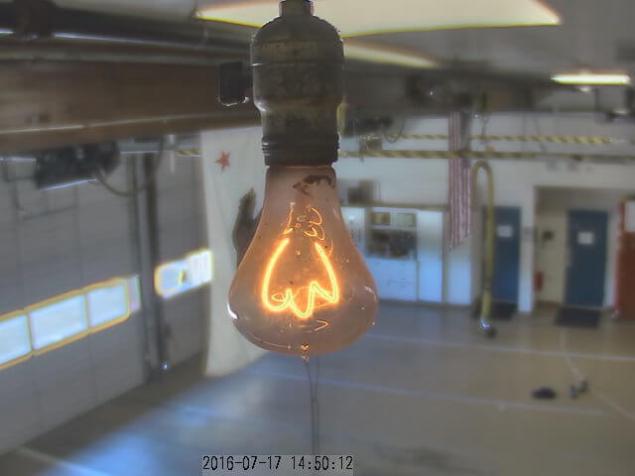
The firm Shelby Electric in 1912 he bought a large conglomerate General Electric, one of the participants of the cartel of 1924, which was attended by Dutch Philips, Osram, the German and the French Compagnie des Lampes. The contract between the corporations provided financial prosperity for decades to come. Many of these manufacturers are still doing their usual business. Now the immediate threat to them are led bulbs.
As soon as households increasingly purchase led bulbs instead of conventional incandescent Lam, large corporations are now approaching the same dangerous point to which the closer of their predecessors for more than 90 years ago, the sales is threatening to start to decrease. Now the lamp LED is approximately 7% of the world market. Analysts predict that by 2022, their share will increase to 50%. In the first quarter of 2016, according to the National Association of electrical manufacturers of the United States, sales of led lamps in the United States increased by 375% compared to the same period last year, and its share of the U.S. market for the first time in history exceeded 25%.
To say that the producers of panic would be an understatement.
There are some hints that the company is trying to apply old Phoebus to limit the lifetime, producing a cheaper product. For example, Philips sells $ 5 LED bulbs with a lifespan of 10,000 hours. Chinese manufacturers generally don't think too much about the durability, producing a mass of cheap low-quality products, which are sold almost by weight.
But in our time it is impossible to arrange the same cartel, as in 1924, too many manufacturers involved in this business, and the online led light bulb is 25,000 hours became the standard. So manufacturers have to think of something else, writes the New Yorker.
One of the logical technique is to make an ordinary led light bulb part of another larger product, for which it is possible to keep planned obsolescence. Manufacturers rely on the fact that ordinary light bulbs of the past will become part of intelligent systems intelligent home lighting. For example, Philips manufactures a line of smart led light bulbs and the Hue controller. These bulbs are intelligently change the brightness and color temperature of light (16 million colors) and are networked. They operate on a standard network the Zigbee Protocol, so that third-party Zigbee bulbs also have the option to connect to a single network.
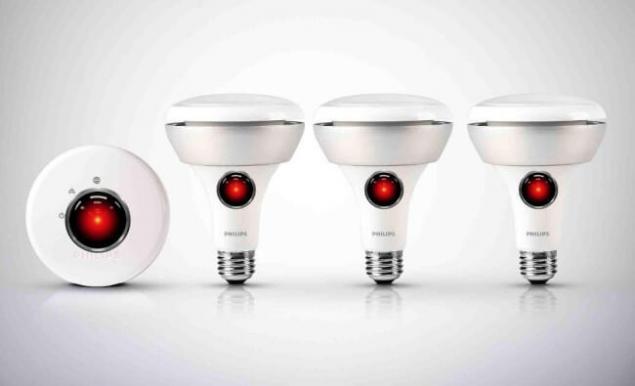
Led light bulb Philips Hue
Six months ago, the company Philips has shown an example of another non-standard technique that gives an idea of how manufacturers of light bulbs are going to fight for their place under the sun. In December 2015, she released obnovleniyami firmware branded network bridge, which began to block access to the Hue API for any "not approved" bulbs. Approved are those who have received the certificate "Friends of Hue" (Friends of Hue). The rest will have to disconnect from the company network background Philips lighting and work offline. Among the rejected light bulbs Cree, GE, Osram and others.
Thus, manufacturers of light bulbs have started to use to his advantage the legislation on the protection of intellectual property, specifically the notorious DMCA.
Maybe the producers are counting that in the "Internet of things" laws like the DMCA would enable them to implement something like a modern digital "planned obsolescence", when the old lamps are not compatible with more modern electronics/software/interfaces. Although physically they could work for years but de facto, consumers are forced to purchase new models as they are now forced to do, for example, smartphone customers due to the constant upgrading of the ecosystem, the constant release of new versions of OS and software that is not compatible with older versions of the OS. Studies in Europe showed that consumers change smartphones, on average, every 2.7 years. This is a perfect example to follow by the manufacturers of lighting fixtures. The bulbs also should be part of a rapidly evolving and aging hardware and software ecosystem "Internet of things".
In any case, one thing is clear: the company is not able to survive if it produces products with a lifespan of 43 years. Competition from those same Chinese manufacturers are simply forced Western corporations to figure out how to transform the business and make a new "product" on the basis of conventional light bulbs. They just have no other choice but to promote intelligent lighting system and the concept of the "Internet of things", "smart home" and other.

It seems that manufacturers have accepted the inevitable. A month ago, the company has allocated the Philips lighting business into a separate company Philips Lighting, which is preparing for an IPO. German Osram is one of the largest manufacturers of lighting lamps is also allocated its two-billionth the business of manufacturing lamps in an independent company Ledvance which is now for sale. And in October last year did the same thing the American General Electric, the third participant of the cartel of 1924, founding the subsidiary company the G. E. Lighting which will be easy to sell.
Led bulbs — perhaps the first mass product of the 21st century, which challenge the established concept of planned obsolescence.
Let's see what happens. Economists say that the transition of society to quality products with long service life will require radical, systemic change of the consumer economy, which is likely to cause a slowdown in economic growth in the short term. "This may not be acceptable to governments, which use economic growth as the main performance indicator", — wrote in his book Longer Lasting Products Professor Tim Cooper (Tim Cooper), head of the research group on sustainable consumption, University of Nottingham. But he believes that sooner or later mankind will be forced to abandon consumerism in its current form and go to use of products with long-life, repairable and replaceable parts. This will inevitably have to make just for the reason that the environmental and material resources of our planet are limited and can not provide the infinite growth of consumption. published
P. S. And remember, only by changing their consumption — together we change the world! ©
Source: geektimes.ru/post/278548/
In the contract the standard life span of incandescent bulbs was reduced to 1000 hours. This agreement is considered to be one of the first examples of planned obsolescence in industrial scale and a service life of about 1000 hours remained until now.
It is noteworthy that with the beginning of sales of new models of lamps manufacturers explained: the run time decrease is due to the fact that it is necessary to set the quality standards for light levels and energy efficiency. But historians who study archival documents Phoebus, say that the new models had only one significant technical innovation: a shorter lifetime of the filament. Light bulb just before it burns out.
Today, the manufacturers of led light bulb gets the same problem. Conventional lamps LED life time is 25 000 hours, according to the standard, then they lose more than 30% of its brightness. Under the condition of continuous operation is 1041 day, that is a little less than three years. In a typical American household bulb lighting is not staffed, and an average of 1.6 hours a day. Thus, resource led bulb will last for about 43 years, but in the market there are LED bulbs with a lifespan of 50,000 hours. What sustainable business can count on selling such products?
In our days, planned obsolescence of products has become a normal technique not only for bulbs but also for consumer electronics, smartphones, computers, cars and other goods. Moreover, planned obsolescence and the cult of consumption is considered to be a stimulus to the economy and supported on a national scale. During the great depression in the United States some economists called planned obsolescence of products "new God" for the business. Since the thesis of the need to support the "re-consumption" through planned obsolescence has become the almost immutable economic axiom. It formed the basis of the entire consumer economy of today, without which it is difficult to imagine a modern society. Now people are working 10 hours a day without leave, to have the opportunity to buy new products to replace old ones that are planned obsolete.
To the cartel of 1924, the bulb worked longer than many modern products. Light bulb at fire station No. 6 in Livermore is an outstanding example of the reliability of products at the time. With a rated power of 60 watts, this hand-blown bulb is now operating at about 4 watts, but still around the clock provides night lighting for fire trucks at the station. Although now it performs rather a decorative function, but before the lamp was hanging lower, and the sound of the fire alarm before leaving every fireman thought it his duty to slap her for good luck.

The lamp was manufactured around 1900 by engineers of a small American company Shelby Electric of Ohio, on the design of Franco-American inventor with Russian roots Sheila Adolf (Adolphe Chaillet). The exact construction of the bulb-record not thoroughly understood. It was one of many experimental lights. At that time, the company Shelby Electric has tested many different design types. We only know that it uses a carbon filament with a thickness of about as current filaments, usually made of tungsten.
In the near future, "the old lady" from Overmortgage fire station sent for him and give it to (perhaps a Museum). But she is still not burned out. This lamp has already become famous, and her glow has broadcast the Internet a special web-camera.

The firm Shelby Electric in 1912 he bought a large conglomerate General Electric, one of the participants of the cartel of 1924, which was attended by Dutch Philips, Osram, the German and the French Compagnie des Lampes. The contract between the corporations provided financial prosperity for decades to come. Many of these manufacturers are still doing their usual business. Now the immediate threat to them are led bulbs.
As soon as households increasingly purchase led bulbs instead of conventional incandescent Lam, large corporations are now approaching the same dangerous point to which the closer of their predecessors for more than 90 years ago, the sales is threatening to start to decrease. Now the lamp LED is approximately 7% of the world market. Analysts predict that by 2022, their share will increase to 50%. In the first quarter of 2016, according to the National Association of electrical manufacturers of the United States, sales of led lamps in the United States increased by 375% compared to the same period last year, and its share of the U.S. market for the first time in history exceeded 25%.
To say that the producers of panic would be an understatement.
There are some hints that the company is trying to apply old Phoebus to limit the lifetime, producing a cheaper product. For example, Philips sells $ 5 LED bulbs with a lifespan of 10,000 hours. Chinese manufacturers generally don't think too much about the durability, producing a mass of cheap low-quality products, which are sold almost by weight.
But in our time it is impossible to arrange the same cartel, as in 1924, too many manufacturers involved in this business, and the online led light bulb is 25,000 hours became the standard. So manufacturers have to think of something else, writes the New Yorker.
One of the logical technique is to make an ordinary led light bulb part of another larger product, for which it is possible to keep planned obsolescence. Manufacturers rely on the fact that ordinary light bulbs of the past will become part of intelligent systems intelligent home lighting. For example, Philips manufactures a line of smart led light bulbs and the Hue controller. These bulbs are intelligently change the brightness and color temperature of light (16 million colors) and are networked. They operate on a standard network the Zigbee Protocol, so that third-party Zigbee bulbs also have the option to connect to a single network.

Led light bulb Philips Hue
Six months ago, the company Philips has shown an example of another non-standard technique that gives an idea of how manufacturers of light bulbs are going to fight for their place under the sun. In December 2015, she released obnovleniyami firmware branded network bridge, which began to block access to the Hue API for any "not approved" bulbs. Approved are those who have received the certificate "Friends of Hue" (Friends of Hue). The rest will have to disconnect from the company network background Philips lighting and work offline. Among the rejected light bulbs Cree, GE, Osram and others.
Thus, manufacturers of light bulbs have started to use to his advantage the legislation on the protection of intellectual property, specifically the notorious DMCA.
Maybe the producers are counting that in the "Internet of things" laws like the DMCA would enable them to implement something like a modern digital "planned obsolescence", when the old lamps are not compatible with more modern electronics/software/interfaces. Although physically they could work for years but de facto, consumers are forced to purchase new models as they are now forced to do, for example, smartphone customers due to the constant upgrading of the ecosystem, the constant release of new versions of OS and software that is not compatible with older versions of the OS. Studies in Europe showed that consumers change smartphones, on average, every 2.7 years. This is a perfect example to follow by the manufacturers of lighting fixtures. The bulbs also should be part of a rapidly evolving and aging hardware and software ecosystem "Internet of things".
In any case, one thing is clear: the company is not able to survive if it produces products with a lifespan of 43 years. Competition from those same Chinese manufacturers are simply forced Western corporations to figure out how to transform the business and make a new "product" on the basis of conventional light bulbs. They just have no other choice but to promote intelligent lighting system and the concept of the "Internet of things", "smart home" and other.

It seems that manufacturers have accepted the inevitable. A month ago, the company has allocated the Philips lighting business into a separate company Philips Lighting, which is preparing for an IPO. German Osram is one of the largest manufacturers of lighting lamps is also allocated its two-billionth the business of manufacturing lamps in an independent company Ledvance which is now for sale. And in October last year did the same thing the American General Electric, the third participant of the cartel of 1924, founding the subsidiary company the G. E. Lighting which will be easy to sell.
Led bulbs — perhaps the first mass product of the 21st century, which challenge the established concept of planned obsolescence.
Let's see what happens. Economists say that the transition of society to quality products with long service life will require radical, systemic change of the consumer economy, which is likely to cause a slowdown in economic growth in the short term. "This may not be acceptable to governments, which use economic growth as the main performance indicator", — wrote in his book Longer Lasting Products Professor Tim Cooper (Tim Cooper), head of the research group on sustainable consumption, University of Nottingham. But he believes that sooner or later mankind will be forced to abandon consumerism in its current form and go to use of products with long-life, repairable and replaceable parts. This will inevitably have to make just for the reason that the environmental and material resources of our planet are limited and can not provide the infinite growth of consumption. published
P. S. And remember, only by changing their consumption — together we change the world! ©
Source: geektimes.ru/post/278548/
How to build a plant for biogas production: the bioreactor are doing with their hands
First aid for ectopic pregnancy



